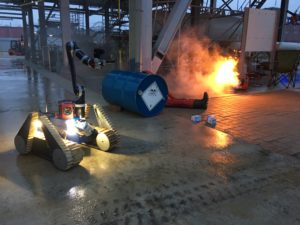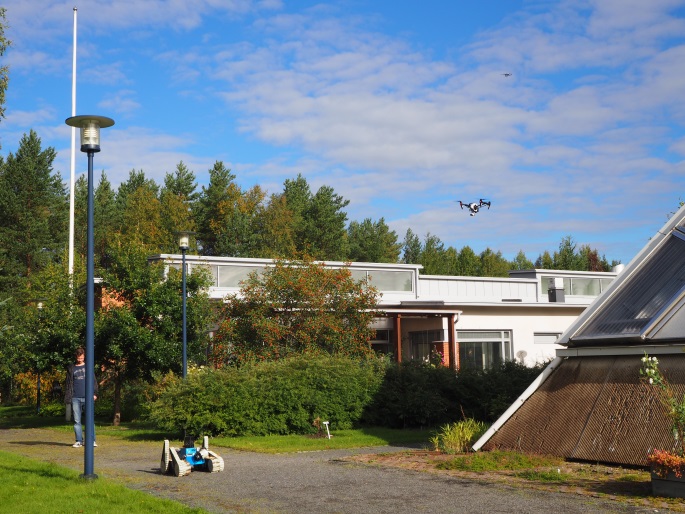This year the last TRADR Evaluation exercise (T-Eval) took place in the port of Rotterdam, the Netherlands, from 13 to 16 November 2017. The location was the Deltalinqs training facility, which offers and industrial setting consisting of a maze of pipes, containers, barriers and tanks, thus providing a realistic backdrop for the TRADR scenario.
During the exercise members of the Rotterdam Harbor United Firefighters (the TRADR end-users) used the TRADR system to execute a disaster response mission. Mission objectives included the creation of maps enabling autonomous UGV navigation, multi-robot patrolling and searching for Points of Interest, such as victims, fire, smoke and chemical leakage. Additionally, the robot arm was used to retrieve samples from the hot-zone. Due to improvements of the TRADR system in terms of stability, along with various new and improved functionalities, the firefighters were able to run a large number of sorties as part of the mission. As such the last evaluation exercise was concluded successfully.







